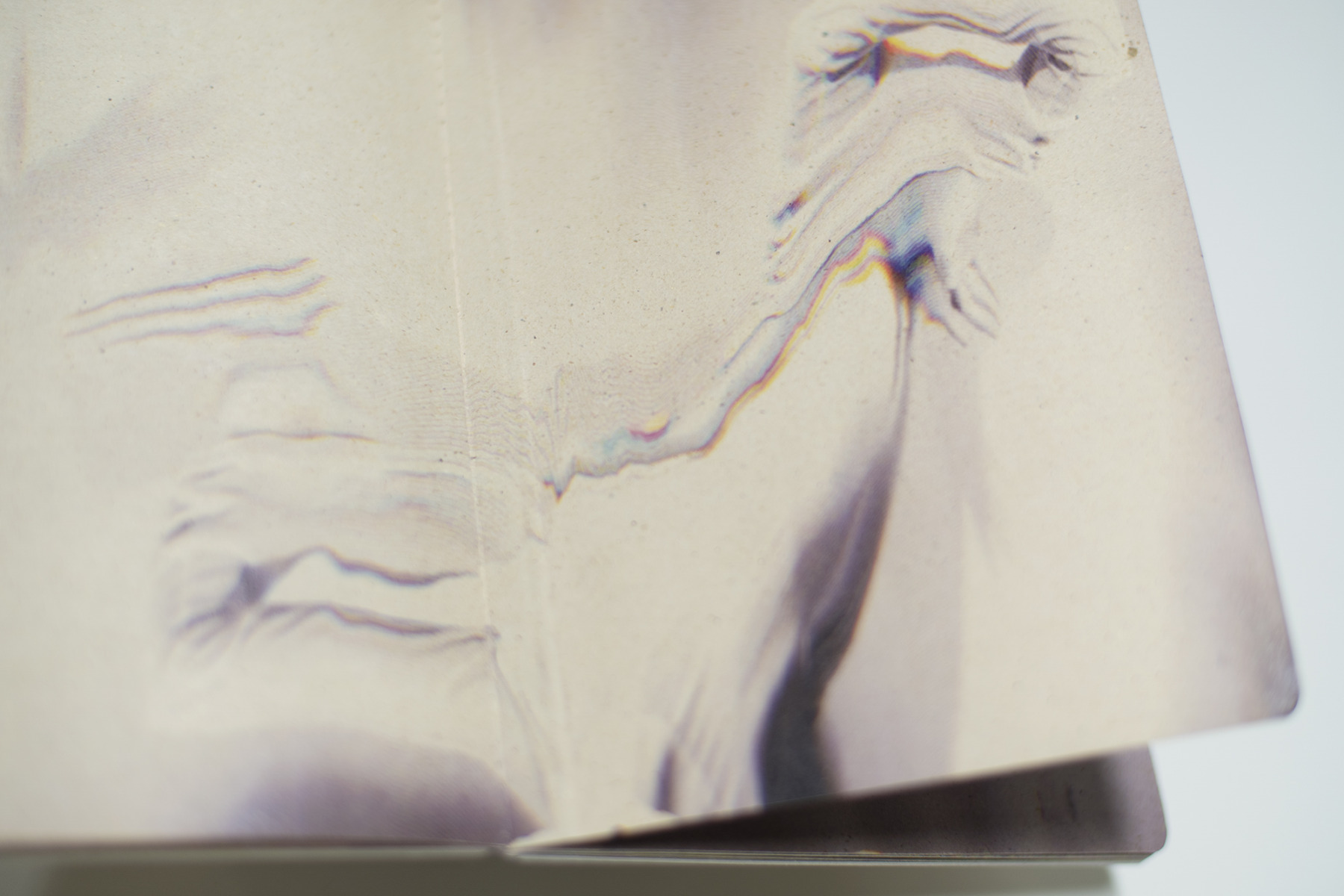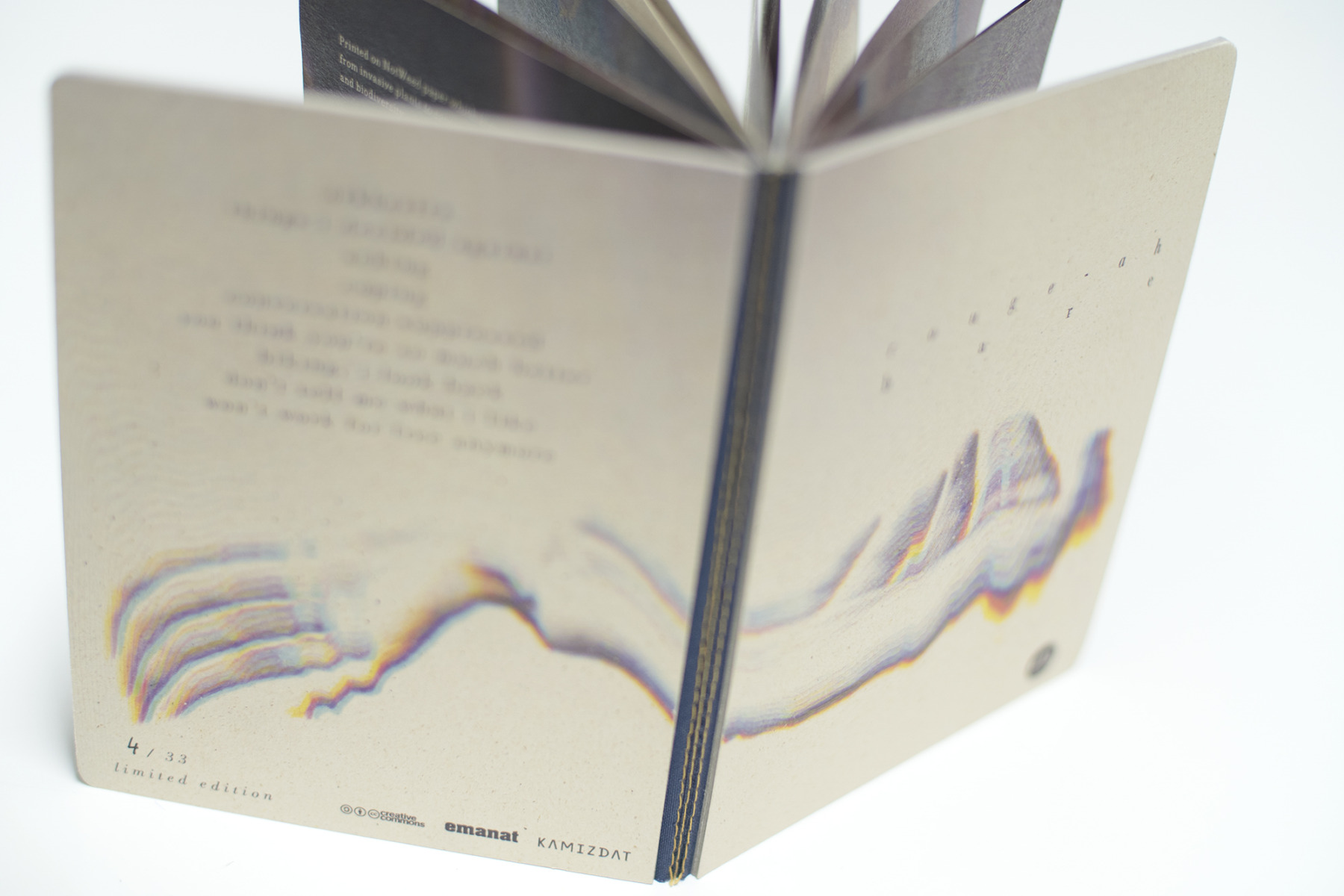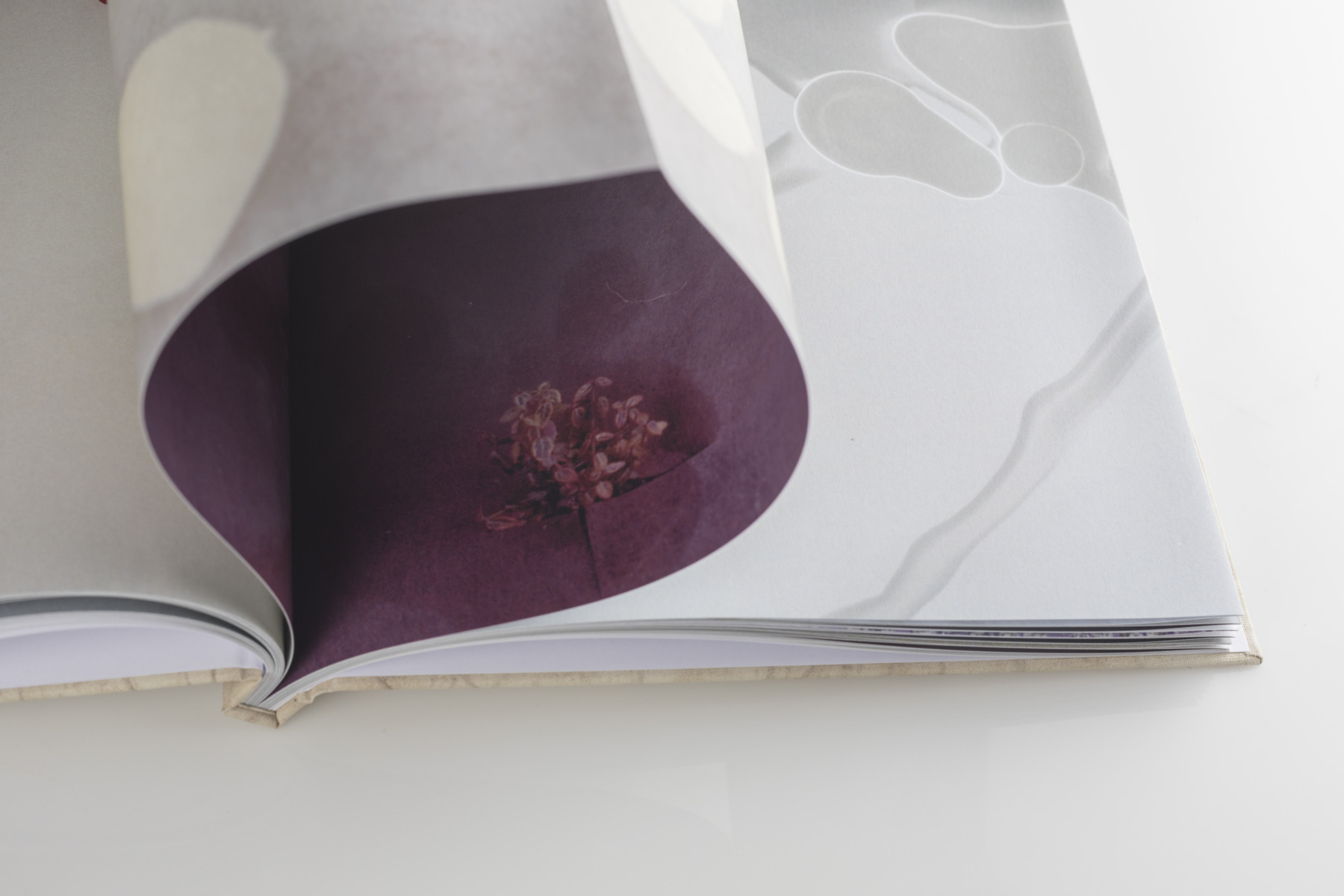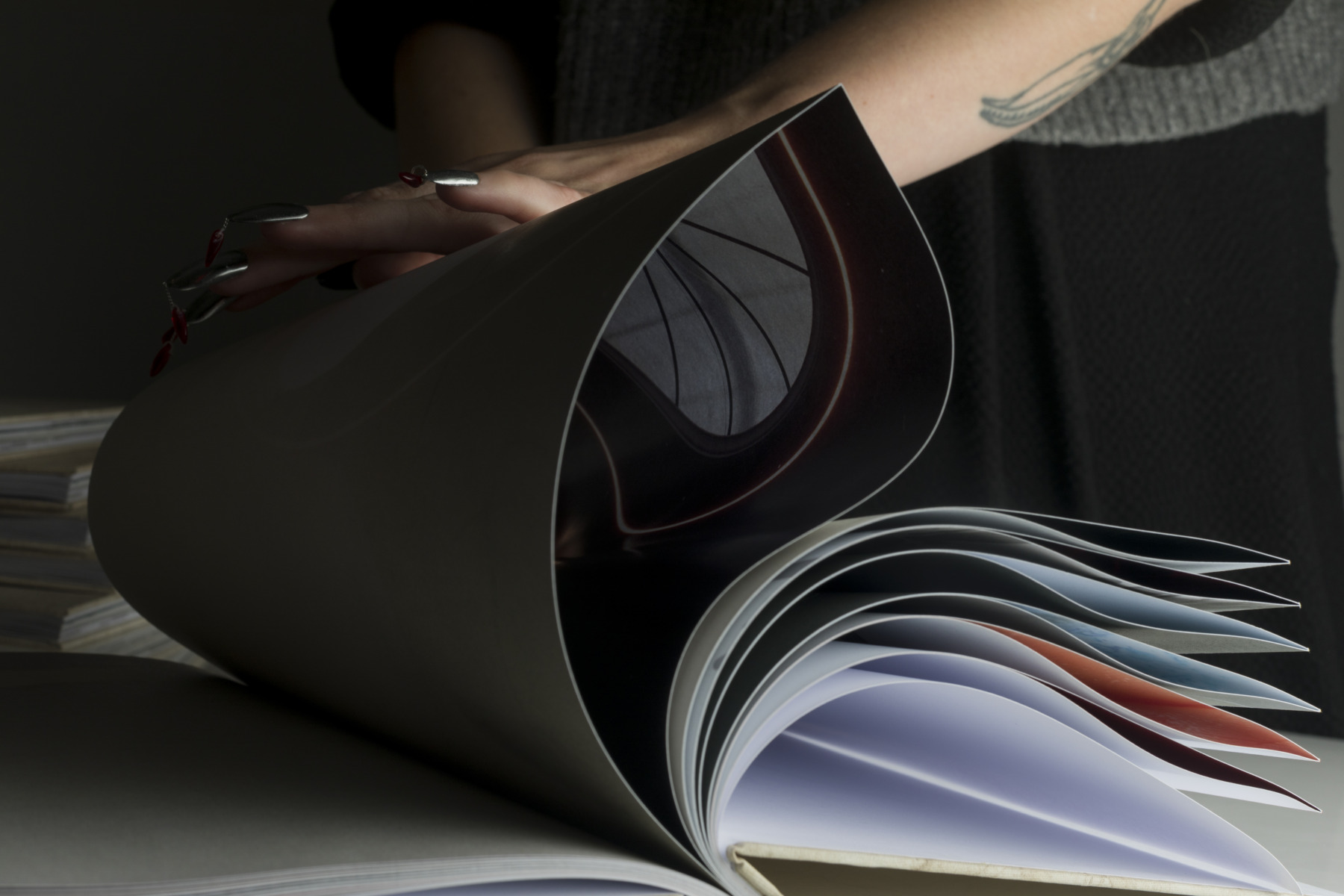Close your eyes and lose yourself in this mixtape—an immersive sonic landscape both captivating and chilling.
Urška Preis, an artist from Ljubljana who works under the pseudonym of rouge-ah, is unafraid of getting to the core of emotion. From her deep and vast sonic compositions to her raw and striking visual art, the need to push society’s boundaries as a woman underlies her work. Her sound as a musician is nuanced. Through sampling and layering, her harp expands into an electronic dimension, resulting in a mind-bending exploration of sound.
Following her debut album in 2018, bare, rouge-ah has continued to embark on an array of musical projects, working with groups such as the avant-garde ensemble Zehletet, and the four-piece experimental noise group Sujevera. She also is part of the duo II/III, alongside electronic producer Tine Vrabič. Yet her artistic contributions extend beyond her musical engagements. Through her work as a broadcaster, events curator, visual artist, writer, and photographer, rouge-ah is persistent in exploring new ways of telling untold stories.
For FF Mixtape #179, rouge-ah has created a compilation of tracks consisting of her long-time faves, music by her friends, and tracks of artists that are on the outskirts of mainstream media.

-
What led you to pick up the harp as an instrument?
I don’t come from a family of musicians or artists, so when I started bugging my parents to play the harp at the age of four, they were puzzled. There is a family legend that when my mother was pregnant with me in Florence on holiday with my father, she would sit down on the pavement and listen to a street harpist after a full day of sightseeing. She bought his cassette and played it a lot for the rest of the pregnancy and when I was a baby. Supposedly that was my only contact with the harp, even though I never heard the cassette and I have no recollection or memory of it. At the age of seven, after spending two years in music kindergarten, my parents and teacher tried to convince me to play something more reachable. However I soon acquired a small Celtic harp in my local music school, and finally started playing.
-
Whilst classical music is not at the core of contemporary mainstream culture, it has been crucial to the evolution of many other musical genres. How does your classical training inform your process and vision?
Having to play a lot of classical music in school and not really vibing with it, made me realize that this is not what I want to do in life. I have a major respect for musicians who do it but to me, it always felt like some kind of sport, where creativity came after skill. My classical training inspired me to do something else, something that I could entirely call my own. It was much later, when dating a musicologist, that I got introduced to a different way of listening and understanding composed music. It also enlarged my knowledge of some lesser-known but wild and inspiring 20th and 21st-century composers, who to some extent influence my work.
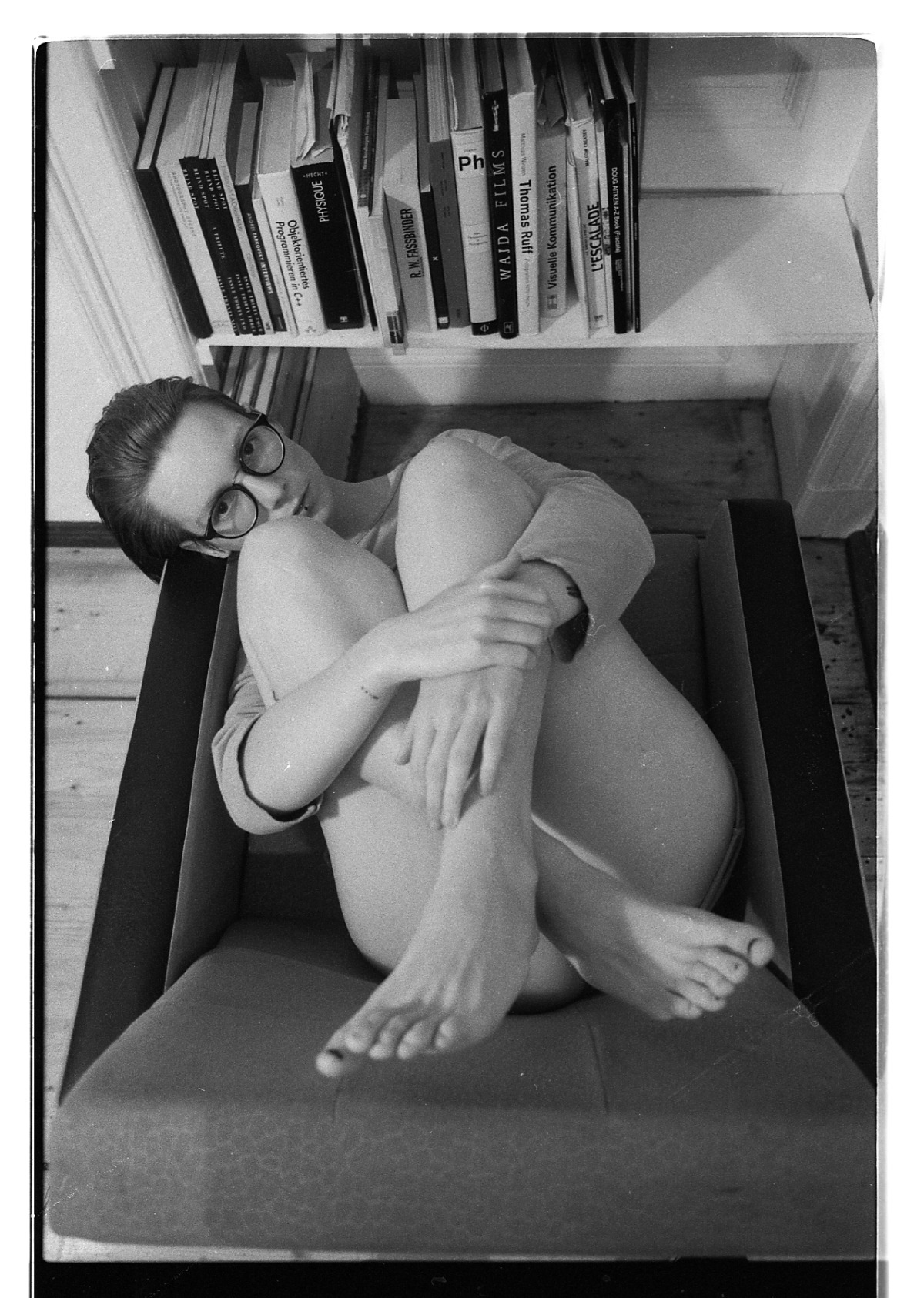
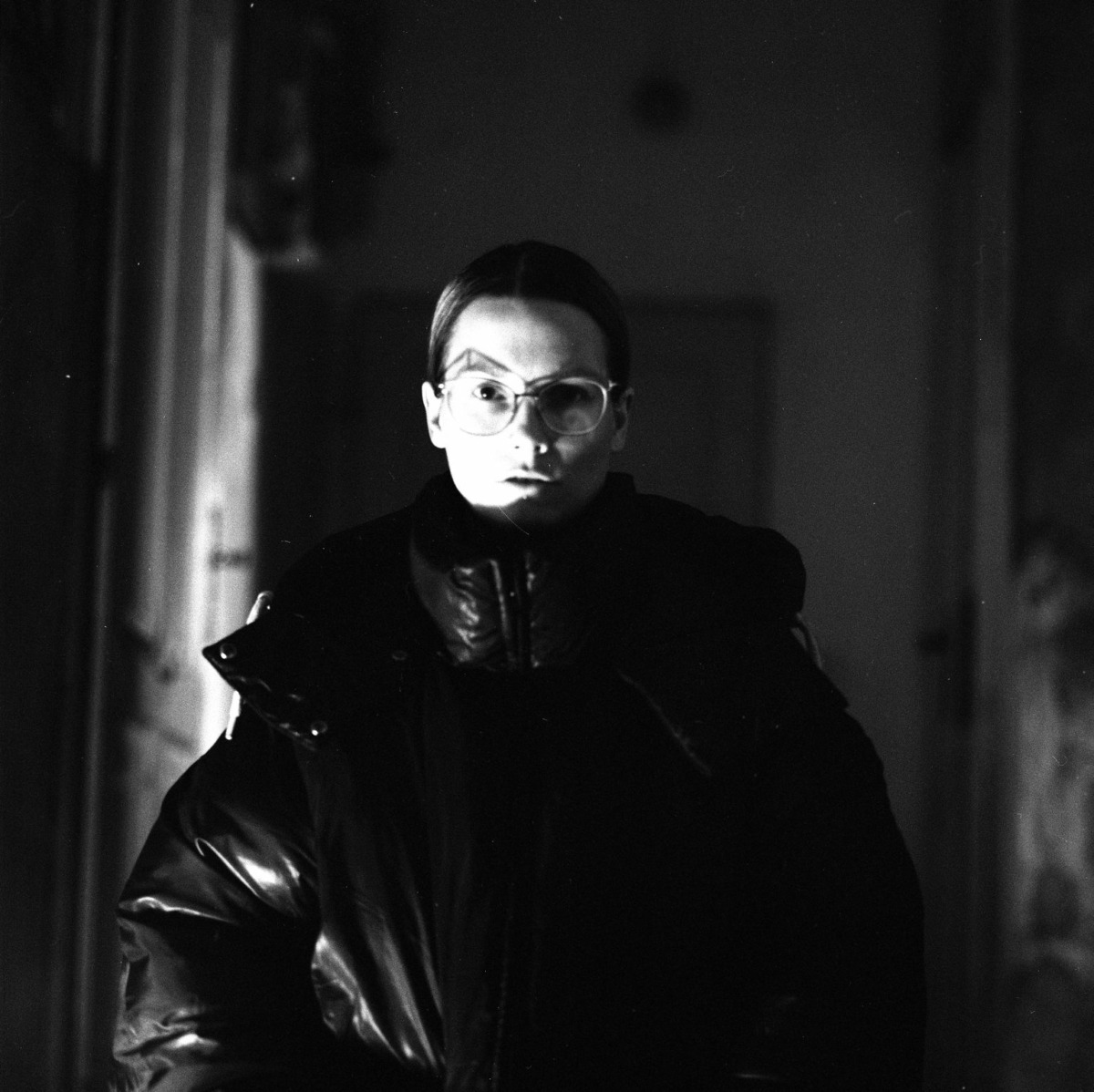
-
When it comes to telling a story through instrumental music, notably through the absence of words, how do you communicate with the listener?
That might actually be the major part of classical training that I still carry with me. Music without words has always been something that I can read as a story or a set of emotions. It is also how I approach my own composing. It begins with a story, a feeling, one word, or plenty, and that inspires me to create specific sounds. To me it is clear and I think a part of the message is always transparent through the titles, but I don’t mind if listeners and audiences interpret it differently. I actually find that one of the most magical things in art.
-
Your debut solo album entitled bare is described as a ‘sonic self-portrait’. What was the concept and compositional idea behind this piece of work?
In art school, the approach for every class is usually to start with a self-portrait. Studying fine arts and design allowed me to explore what it means to capture yourself through different forms of media and expand the limits of portraying yourself. So it came naturally to me to debut with a self-portrait, to get bare in front of others musically. At that time I was experiencing a lot of emotional turmoil in terms of my musical past, romantic drama, experience with abortion, and living as an independent artist. I wanted to capture this through my sound.

“No one will die because of your art, so be brave, don’t be scared to stand out, make it meaningful, lift others up, take it easy, and try to enjoy. “
-
II/III, the dark ambiental duo that you are part of, fuses classical and electronic music. The result is an ethereal and transfixing sound that escapes all forms of categorization. What does the collaborative process of creating a track alongside electronic guru, Tine Vrabič, look like?
Tine and I have known each other for over a decade and we have been friends well before making music together, so working together is somehow always super chill. We understand each other’s work and life flows and manage to produce new ideas unburdened by one another’s expectation. We usually start by jamming, and if we are pressured by time, Tine prepares some ideas in advance, but mostly we just go according to our current mood. When we have a rough skeleton, we start sampling different harp sounds, sometimes also other instruments and objects. But a lot of what he works with in live sets is actually sampled harp. When we want to produce a track for listening, we sit together and try out different things and arrange it, I would maybe play some more, etc. For live acts, we decide what harp sounds to play live and he takes them out of arrangements. He doesn’t like to repeat himself, so we tend to create new music for every live act, but since we are in the process of creating a full-length debut album, we are currently also working with that material. I also like to conceptualize and give meaning to music, so researching topics to work with is usually on me. Either way, I love to work with him because it also means spending time with one of my best friends. It’s fun, engaging, therapeutic, relaxed, and rewarding.
-
What is your creative mantra?
No one will die because of your art, so be brave, don’t be scared to stand out, make it meaningful, lift others up, take it easy, and try to enjoy.

“The common denominator is always feminist theory and approach. The theory I find fundamental, but realizing the conceptuals into practice is crucial in making this world bearable.”
-
Alongside making your own music, you are a visual artist and photographer. How do your different creative mediums interact with each other?
Music, visual art, and working as a writer and critic used to mean that I can always fall on something else when one thing is not working out or I lack a certain kind of inspiration. Lately, though, I find a lot of force in connecting all my disciplines into something bigger, so there is less compartmentalizing and more interactivity happening. However, the common denominator is always a feminist theory and approach. The theory I find fundamental, but realizing the conceptuals into practice is crucial in making this world bearable.
-
Any exciting projects in the pipeline?
As mentioned, we are in the process of creating an album with II/III and I am also looking forward to start the recording for my long overdue sophomore album in November. Besides that, we premiered Florentina Holzinger’s piece Ophelia’s Got Talent at Volksbühne am Rosa- Luxemburg Platz in September, where I made music and also performed (even some classical pieces!). We are a part of this year’s repertoire and also start touring internationally in 2023, so altogether it is an exciting era for me. In the visual arts department I released an art book BÔLI (translated ACHES) earlier this year and aim to promote it further as well as continue my research on the topic of pain, which has been fascinating me for years now.
-
What album or song inspires you?
That is ever-changing, I tend to obsessively listen to certain artists, albums, or songs. I guess an evergreen that I would take with me to an isolated island, as I always find new ideas in it, would be Lost in Shadows by Ashley Paul. But ask me again in ten minutes.
-
Finally, how did you select the tracks for this mixtape?
Working at an independent radio station (Radio Študent) and co-organizing a feminist and queer festival (Red Dawns), I really grasped the importance of promoting and covering artists that don’t get a lot of space in the mainstream media. I have been subscribed to many indie labels on Bandcamp for a while—and the list always keeps growing—so this was a big source for putting together the mixtape. I also included some of my longtime most-played favorites and since I have many talented friends that make amazing music, I wanted to give some space to them as well.
rouge-ah is a musician, producer, visual artist, photographer and music writer based in Slovenia. Alongside her solo sound projects, she works with a multitude of experimental ambient groups such as Zehletet, II/III, and Sujevera. Her work as a visual artist traverses between installation, photography, and collage. Alongside contributing to the studio and collective KELA, her debut art book BÔLI, delves into the ancestral pain of women through photograms made with menstrual blood. She further contributes as a broadcaster and curator to Radio Študent and ARS (Radio Slovenia Third Channel), and helps organize events for the international feminist and queer festival, Red Dawns, based in Ljubljana.
Make sure to follow rouge-ah to keep updated with new releases, events, and performances.

Photography: Lia Surely, Ajda Zupan, Marko Humljan, Peter Fettich,Kristina Kralikova, and Darja Štravs Tisu
Graphics courtesy of Hanna Juta Kozar
Interview and Text: Isabelle Moulding


